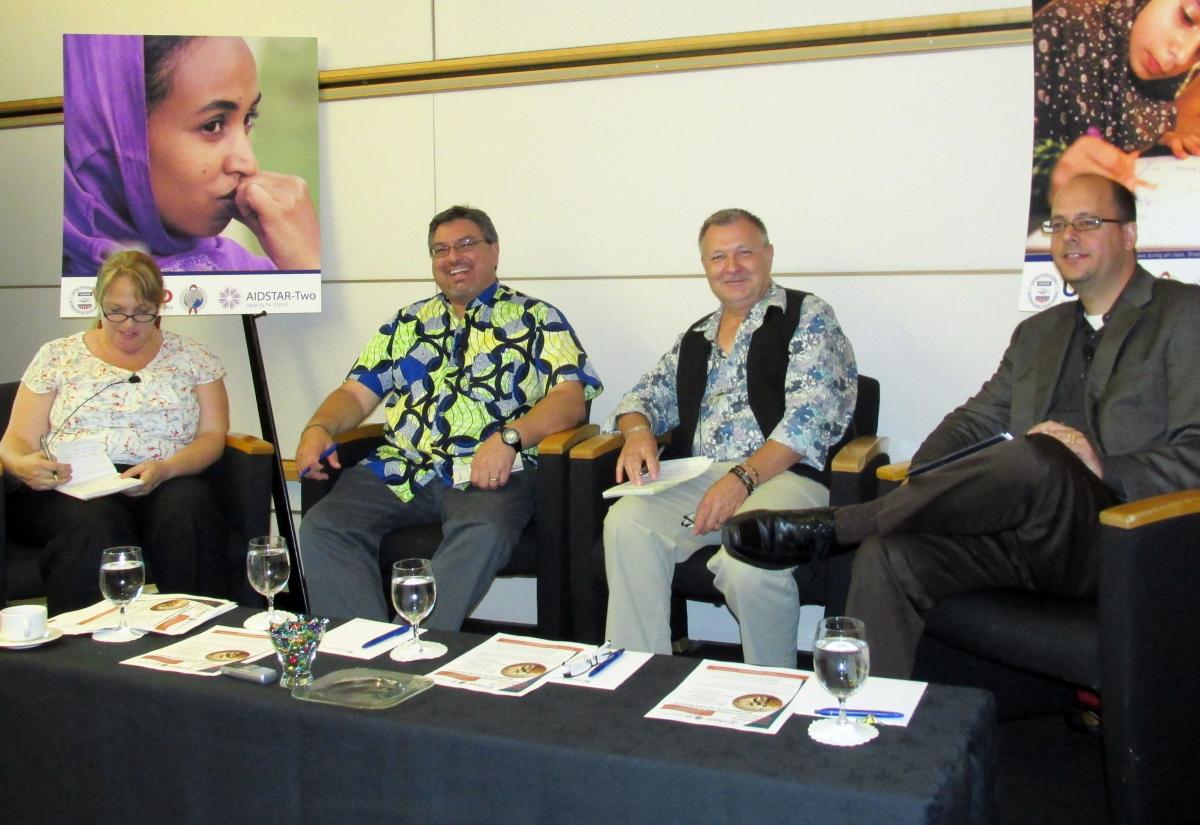
Three Answers for Walking Faster and Reaching Farther in Our Response to AIDS
Last week I p articipated in Walking Faster and Reaching Farther: Strengthening Public Sector-NGO Partnerships in the AIDS Response, the final discussion in a four-part series on capacity development and country ownership hosted by AIDSTAR-Two.
articipated in Walking Faster and Reaching Farther: Strengthening Public Sector-NGO Partnerships in the AIDS Response, the final discussion in a four-part series on capacity development and country ownership hosted by AIDSTAR-Two.
This topic is very timely. Many local nongovernmental organizations (NGOs) and civil society organizations (CSOs) around the world depend on the Global Fund, PEPFAR, and other donor money to respond to HIV and support people living with the virus. But with diminishing donor funds expected, the funding base of these organizations is unstable. In many cases, they are not closely aligned with the Ministry of Health or other public-sector entities, and their relationships need strengthening. There are, however, some examples of local CSOs and NGOs working closely with the public sector, as well as examples of what it takes to strengthen both sectors to work together productively to assure an appropriate HIV response. Further strengthening of these partnerships is critical.
During the discussion, I joined Elden Chamberlain and Jennifer Mason in answering three questions related to fostering multisectoral collaboration in the national AIDS response. Below are the questions we were asked and my answers, which drew on my vast experience working in Africa with the civil society, government, and private sectors to strengthen the health workforce and health systems.
Over the last 10 years, what have we learned about using organizational capacity development to strengthen local partnerships in the AIDS response?
The beginning of PEPFAR saw the advent of scale up, scale up, scale up and numbers, numbers, numbers. This was important to save lives but capacity-building, organizational development, health systems strengthening, and partnerships came as afterthoughts. Fortunately, we have been able to leverage PEPFAR to retrofit these vital aspects. Because without these elements, true partnership and sector-wide country ownership can’t take place.
Given the emergency nature of PEPFAR, in many countries civil society acted for or in lieu of government to provide essential services to those living with HIV. Over the last decade, we have seen this evolve into civil society working with governments to achieve a common health goal.
We also operated under the assumption that the North or the West had it (knowledge, resources, and capacity) and would give it to the South. The substantial African experience of working with HIV and providing services, however, means that local solutions are now where the it lies and therefore local solutions need to be the basis of partnerships for development relationships to be truly operational and productive.
What are some of the major challenges and positive lessons that countries have learned about establishing effective partnerships, especially between the public sector and civil society organizations?
A major challenge, maybe even the greatest challenge, to effective partnerships is trust.
Civil society often does not trust government to provide necessary services equitably or in a timely manner. Government, on the other hand, often does not trust civil society on the basis that their calls do not serve the entire population or will upset the political power base.
In reality, over the last decade, civil society and government have had to work closely together whether they liked it or not. This has led to some understanding on both sides that neither side is really out to get them but rather they are working from different perspectives toward a common goal.
Trust is still an issue, but it is improving over time, and there are many examples of the recognition of the role of civil society in furthering a government’s health agenda. For instance, the PEPFAR Partnership Framework Implementation Plan in South Africa (signed by both governments) calls for support to NGOs to foster innovation—acknowledging that civil society can do this better and faster than government can.
What are some of the promising approaches to further enhance the implementation of partnership frameworks to achieve a sustained country-led AIDS response?
I see three promising approaches to partnerships:
Partnerships used to generally be 1:1. Now, in the age of open source, open standards, and collaboration as ways of operating, partnerships are becoming larger. For example, I put together a partnership in South Africa to support the government’s call for a standardized national program to support executive leadership and management training and capacity development. The partnership ultimately included three donors, three universities, and one coordinating NGO, and was led and directed by the Department of Health. Tomorrow’s partnerships will be bigger, with even better collaboration.
Approaches to partnerships need to include what areas to build capacity in and what areas not to build capacity in. For example, USAID is funding a standardized approach to supporting South African health districts through the use of partners that provide supportive mentorship and capacity-building to the district management teams. But because South Africa as a country does not have enough health economists, it would be prohibitive to build capacity at the Department of Health for a health economic unit. In this case, we should not build capacity in the partnership; rather we should build capacity to know what can be outsourced to the private sector or civil society, how to outsource, and how to monitor for results.
Civil society organizations can’t rely solely on donor funding or public-sector funding for their existence. NGOs should consider diversification, including fee for service, grants, public/private partnerships, crowd funding, social impact bonds, microenterprise, and changing mission or even closing if the organizational relevance no longer exists.
You can watch a recording of the discussion here.
Help CapacityPlus spread the word about strengthening the health workforce. Follow us on Twitter and like us on Facebook.
Related items:
Photo courtesy of Malik Jaffer.


